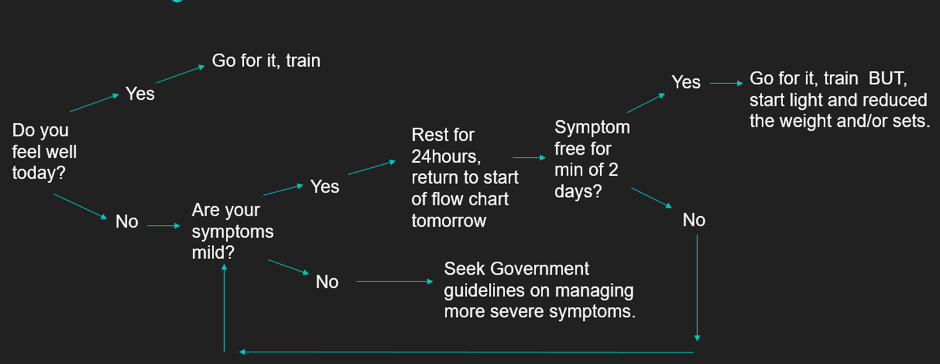3 tips to help prevent injuries
Pull through page title
Pull through abstract and format in bold and large font
With the regularly changing recommendations from the Government, we’re all having to be creative with new exercises and ways to stay fit and healthy.
Here are three top tips to help you stay injury free.
1. Pace yourself
Everyone will have a different baseline level of physical activity, and this should guide the amount and volume of exercise you’re doing. Listen to your body – if you’re feeling tired or unwell, make sure you give yourself a rest.
We recommend being 48-hours symptom free before picking up exercise again during periods of feeling unwell.
We also recommend starting at a level slightly lower than you were at before you felt unwell. This flow chart can help you decide whether you should exercise.

Rest periods are extremely important to let your body recover. If you don’t feel like resting completely, try mixing up the type of exercises you do.
For example, if you’re a runner, you could try doing some lower impact activities instead, such as yoga or Pilates.
As with all new activity or exercise, we’d expect to gradually build up our tolerance to the new ways of moving or loading our bodies.
So, take your time with exercises. If you’re following a video, remember that you can pause for a rest or lower the intensity for a period of time if you need to.
2. Stretch
Regular stretches will help improve your mobility, flexibility and reduce any muscle tightness following exercise. Often by adding regular stretching exercises to your training programme, you can improve your performance too.
Stretching is also particularly beneficial for stress relief, and it can really help people to wind down after a busy day at work.
3. Foam rolling
Foam rolling can be a brilliant way of reducing muscle tension or tightness following exercise. Rolling your muscles by following foam roller exercises will increase your circulation which can boost recovery. It can also help to reduce pain and muscle tightness following exercise.
If you don’t have access to a foam roller at this time, you could use a tennis ball or even just give your muscles a gentle massage.
Please note it is best avoid foam rolling if you have a pre-existing injury or serious health condition and you haven’t been advised to foam roll by either your doctor or physiotherapist.
Enjoy yourself
Exercise should be an enjoyable experience which will differ from person to person. Don’t force yourself out on a 6-mile run or do daily Pilates if that isn’t your thing. Find what you enjoy, keep active, and stay safe and injury free.

Cheryl Culliford-Whyte Content Contributor, Warwick Sport
Cheryl has interests in all kinds of fitness, keeping healthy and looking after your wellbeing. She enjoys hiking, lifting and healthy baking.
Please note: if you are using the information provided in any Content Core article, please read the terms & conditions.
Latest articles


